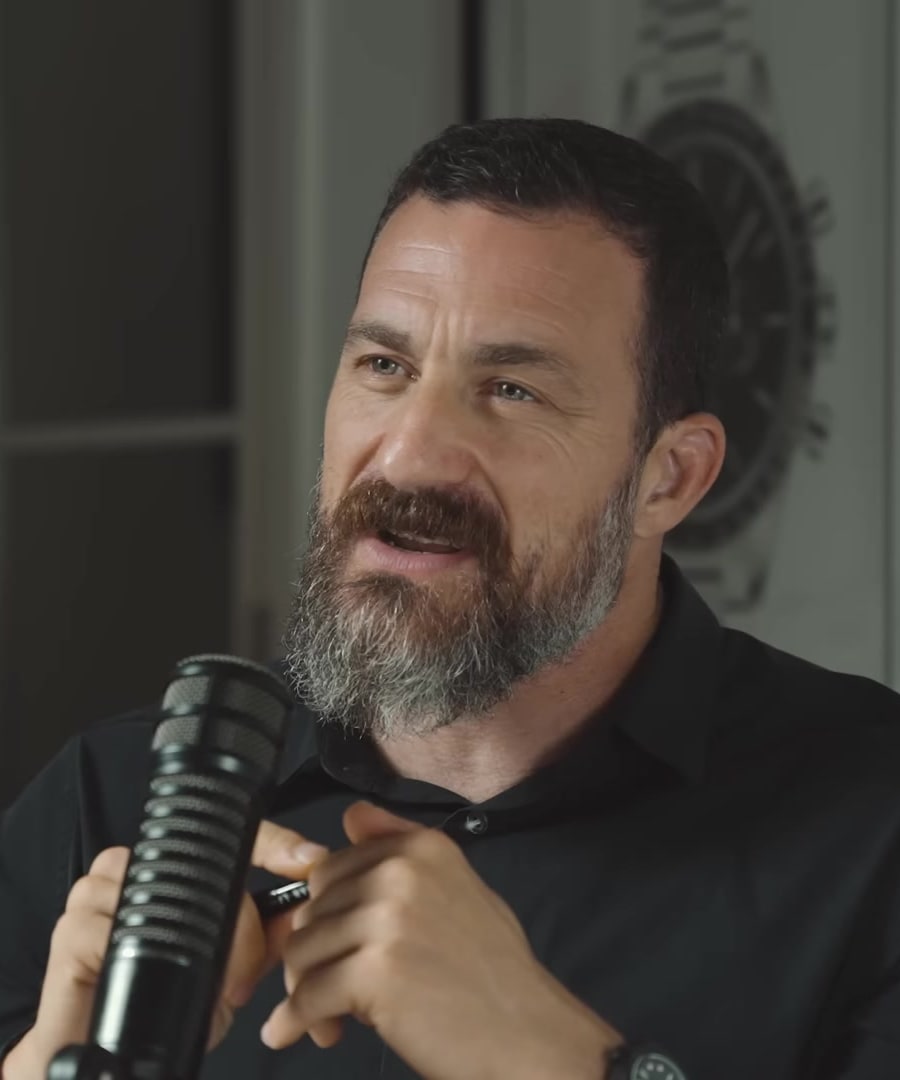Hi Andrew, thank you for sharing knowledge, I would love to hear your opinion about new treatments for vitiligo, my 9 year old son was diagnosed last year and we started treatment with tracolimus, calcipotriene and triamcicolone. I m thinking that AG1 may help but I have read that is not recommended for kids. What is your opinion about that? Thank you in advance. Susana
Sources:
I was not able to locate any specific information on Dr. Huberman's opinion regarding AG1 as a treatment option for vitiligo, especially for pediatric use. Generally, AG1 is considered a comprehensive dietary supplement that provides foundational nutrition, including vitamins, minerals, and probiotics, aimed at supporting overall health and wellness (:chunk_49960:). Dr. Huberman has expressed his positive personal experience with AG1 since 2012, mentioning its contribution to his focus, energy, and sleep quality (:chunk_49057:).
However, Dr. Huberman also stresses the importance of consulting healthcare providers when considering supplements, especially for children (:chunk_49057:). Since AG1 is not specifically recommended for children and your son has been diagnosed with vitiligo, it is crucial to work with healthcare professionals to determine the best and safest course of treatment for him.
For a condition like vitiligo, it's also important to recognize that individual responses to treatments can vary, and a professional can tailor therapy to your son's specific needs. You might want to ask your son's healthcare provider about AG1 and whether it would be a helpful addition to his current regimen based on his individual health status and the current treatment protocols for vitiligo.
RELATED QUESTIONSWhat are some guidelines for choosing supplements for children, especially those with medical conditions?
The has not provided specific guidelines for choosing supplements for children, especially those with medical conditions. However, as a general approach, here are some considerations to keep in mind when thinking about supplements for children, based on general good practices:
-
Consult Healthcare Providers: Always consult with a pediatrician or a healthcare provider who understands your child's unique health profile before starting any supplement. They can give advice tailored to your child's needs and current treatments.
-
Quality and Safety: Look for high-quality supplements that have been tested for safety and efficacy. Reputable brands often undergo third-party testing. Check for organizations like the U.S. Pharmacopeial Convention (USP) seal.
-
Age-Appropriate Formulations: Children have different nutritional needs than adults, so it’s important to choose supplements specifically formulated for children.
-
Consider Nutritional Gaps: Supplements should ideally fill in nutritional gaps in your child's diet, not replace healthy foods. Balanced dietary intake is still the best source of nutrition for most children.
-
Follow Dosage Recommendations: Pediatric supplements come with recommended dosages based on age and weight. Do not exceed these recommendations unless advised by a healthcare professional.
-
Avoid Mega-Doses: More is not always better. High doses of vitamins and minerals can be harmful to children.
-
Beware of Interactions: Some supplements can interact with medications or have effects on underlying medical conditions. This is particularly important for children with health issues.
-
Monitor for Side Effects: Observe your child for any side effects from the supplement and report them to your healthcare provider.
Remember that the best practice when considering supplements for children, particularly those with medical conditions, is to consult with healthcare professionals who can provide personalized advice. They can review your son's current treatment plan, dietary needs, and health status to recommend whether or not a supplement is appropriate.
RELATED QUESTIONS-
Can you provide more information on safe and effective treatments for vitiligo in children?
The has not provided information on treatments for vitiligo in children. When it comes to medical conditions like vitiligo, especially in children, it is crucial to rely on guidance from medical professionals who specialize in pediatric dermatology. These experts can provide informed and safe treatment options that are based on the most recent research and clinical guidelines.
Treatments for vitiligo often include medical, surgical, and adjunctive approaches, such as:
- Topical corticosteroids
- Topical immunomodulators
- Phototherapy (light therapy)
- Excimer laser treatments
- Skin grafting or cellular transplantation methods (for stable vitiligo)
- Cosmetic cover-ups (such as medical tattooing or makeup)
- Psychological support to address any emotional and social impacts
However, the choice of treatment will depend on the extent and locations of the vitiligo, the response to previous treatments, the age of the child, and potential side effects. It is important for parents and guardians to discuss with healthcare providers to understand the risks and benefits associated with each treatment option for their child.
RELATED QUESTIONSHow can I find a specialist for treating vitiligo in children?
The does not provide specific information on finding a specialist for treating vitiligo in children.
However, generally speaking, you can find a specialist to treat vitiligo in children by following these guidelines:
-
Consult Your Primary Care Physician: Your child’s regular doctor can refer you to a pediatric dermatologist who specializes in skin disorders, including vitiligo.
-
Seek Recommendations: Ask for referrals from friends, family, or support groups for individuals with vitiligo.
-
Professional Associations: Look for pediatric dermatologists through professional organizations such as the American Academy of Dermatology (AAD) or the Pediatric Dermatology Research Alliance (PeDRA).
-
Insurance Providers: If you have health insurance, check with your insurance company for a list of covered dermatologists with pediatric experience.
-
Hospital and University Centers: Many academic hospitals have dermatology departments that are involved in cutting-edge research and treatment.
-
Online Directories: Use online medical directories that allow for specialties search — you can often filter by pediatric care and conditions treated.
When you’ve made a list of potential specialists, consider the following factors:
- Credentials and experience specifically relating to vitiligo treatment
- The specialist’s treatment approach and philosophy
- Availability of new treatments and participation in clinical trials
- Accessibility and location
Finally, ensure that you are comfortable with the specialist and that they explain treatment options in a way that is understandable and feels right for your child’s needs. It's essential to work with a healthcare provider who is empathetic and who can guide you through the treatment process with patience and clarity.
RELATED QUESTIONS-
What questions should I ask a potential vitiligo specialist?
Sources:
The does not specifically address what questions to ask a potential vitiligo specialist, but it is important to prepare questions when seeing any medical specialist. Here are some general questions that might be applicable when consulting with a vitiligo specialist:
- How many years of experience do you have treating vitiligo, especially in children?
- What treatment options do you typically recommend for children with vitiligo?
- Are there any new treatments or clinical trials available that we should consider?
- What are the potential side effects or risks associated with these treatments?
- How do you monitor and track the progress of vitiligo treatment?
- Can you provide guidance on how to manage the social and emotional aspects of vitiligo for a child?
- Is there a genetic component to vitiligo, and should family members be evaluated?
- How frequent should we schedule follow-up appointments, and what are the markers for re-evaluation?
- Are there any lifestyle or dietary recommendations that can support treatment efficacy?
- How do we coordinate care between various healthcare providers involved in my child’s treatment?
These questions aim to ensure that you are informed about the experience of the specialist, the treatments available, their possible risks, and how the treatment process would look. It is also equally important to consider how the condition will affect your child's life beyond the physical symptoms and ensure full support is provided.
RELATED QUESTIONSTell me more about vitiligo.
Sources:
The does not provide specific information about the condition vitiligo. However, vitiligo was briefly mentioned in the context of autoimmune conditions during a conversation on a different podcast (The Peter Attia Drive Podcast) between and . They discussed the immune system and how in some autoimmune conditions, such as vitiligo, the immune system mistakenly attacks parts of the body. Vitiligo is characterized by the immune system destroying some of the pigment cells, leading to patches of lighter skin 1 2.
Autoimmune diseases like vitiligo are where the immune system fails at differentiating between foreign pathogens and the body's own cells, thereby attacking and damaging tissues. These conditions can range from mild to lethal, but they do serve as an indication of how the immune system can sometimes misidentify self-tissues as targets 1.
For more comprehensive information about vitiligo itself, including its causes, treatments, and management, consulting a medical professional or a vitiligo specialist will be highly beneficial.
RELATED QUESTIONSHow does vitiligo impact daily life?
Sources:
The has not directly addressed how vitiligo impacts daily life. If you are looking for information on the broader physiological effects of light and how they might relate to mood, wakefulness, and overall well-being, in a conversation covered the importance of sunlight exposure on various aspects of physiology and mental health. This included discussion about how exposure to sunlight, particularly early in the day, can benefit the body's wakefulness mechanisms, metabolism, mood, and well-being 1.
Although this does not directly speak to vitiligo, it is relevant to consider general advice on sunlight exposure since individuals with vitiligo lack melanin in certain skin areas, which can make them more sensitive to sunlight and may affect how they need to manage daily sun exposure. For specific understanding of how vitiligo impacts a person's daily life, seeking the experiences and insights of individuals with vitiligo, alongside medical guidance, is recommended.
RELATED QUESTIONSHow to manage sun exposure with sensitive skin?
Sources:
Managing sun exposure, particularly for individuals with sensitive skin, involves taking certain precautions. has offered some advice on the topic, as follows:
-
Cautious UVB Exposure: He suggests that even for those with sensitive skin, some UVB exposure can be beneficial. For those experiencing chronic pain, UVB exposure from sunlight for 20-30 minutes, two or three times per week is recommended, taking into account the intensity of sunlight and the skin's sensitivity. Using sunscreen or wearing a hat may be important for protection during this time 1.
-
Importance of Sunlight: Sunlight exposure to the skin activates important biological pathways, such as the p53 pathway in keratinocytes, which is involved in hormone regulation. Obtaining appropriate amounts of sunlight exposure on the skin, while adhering to cultural, decency constraints, and avoiding skin damage, is important 2.
-
Mindfulness on Sun Exposure: It's important to consider the total amount of skin exposure when out in the sunlight. The exposure can vary greatly depending on whether one is fully clothed or wearing shorts and a T-shirt. Additionally, Huberman mentions that personal preference and psychological effects, like seasonal affective disorder, also play a role in how one might manage sunlight exposure throughout the year 3.
-
Avoiding Sunburn and Melanoma Risks: emphasizes the importance of avoiding sunburn as a means to mitigate the risk of melanoma. Physical barriers such as clothing provide undisputed protection and should be prioritized, while also being mindful of concerning ingredients in some sunscreens. They intend to dedicate a future episode to the topic of sunscreens 4.
The overall advice from is to balance the benefits of sun exposure with safety precautions to protect sensitive skin. This includes moderate UVB exposure, using protective measures, and considering personal sensitivity and mental health aspects related to sunlight.
RELATED QUESTIONS-
Hi Andrew, thank you for sharing knowledge, I would love to hear your opinion about new treatments for vitiligo, my 9 year old son was diagnosed last year and we started treatment with tracolimus, calcipotriene and triamcicolone. I m thinking that AG1 may help but I have read that is not recommended for kids. What is your opinion about that? Thank you in advance. Susana
- RELATED QUESTIONS
What are some guidelines for choosing supplements for children, especially those with medical conditions?
- RELATED QUESTIONS
Can you provide more information on safe and effective treatments for vitiligo in children?
- RELATED QUESTIONS
How can I find a specialist for treating vitiligo in children?
- RELATED QUESTIONS
What questions should I ask a potential vitiligo specialist?
- RELATED QUESTIONS
Tell me more about vitiligo.
- RELATED QUESTIONS
How does vitiligo impact daily life?
- RELATED QUESTIONS
How to manage sun exposure with sensitive skin?
- RELATED QUESTIONS






